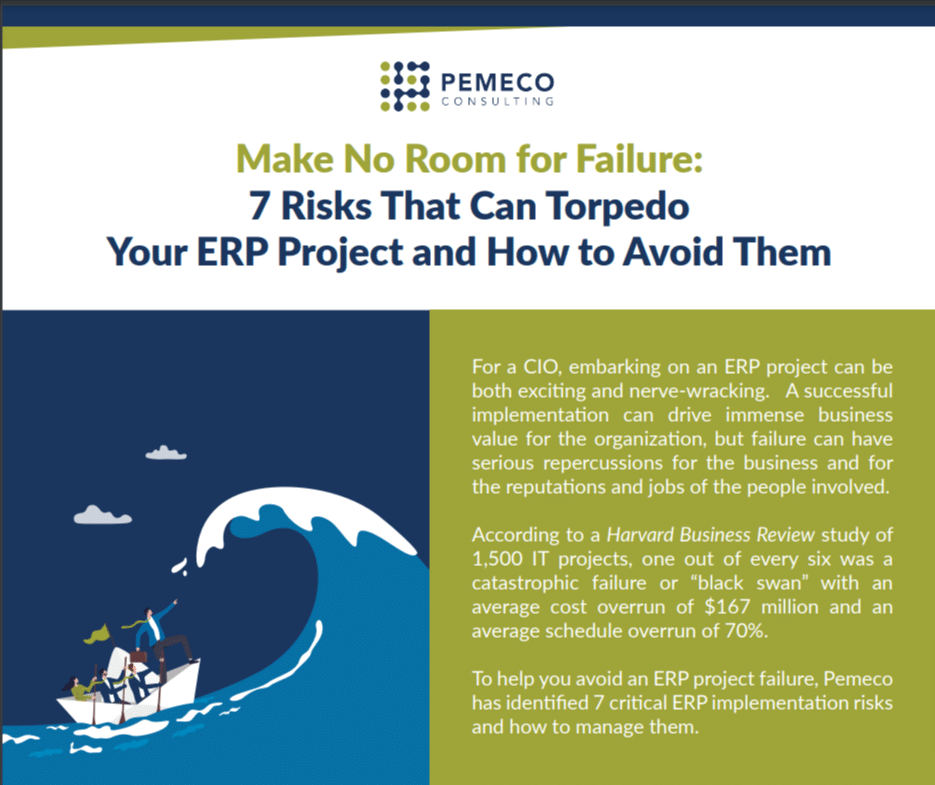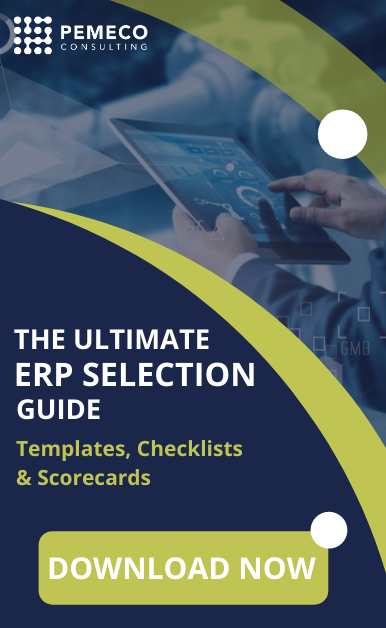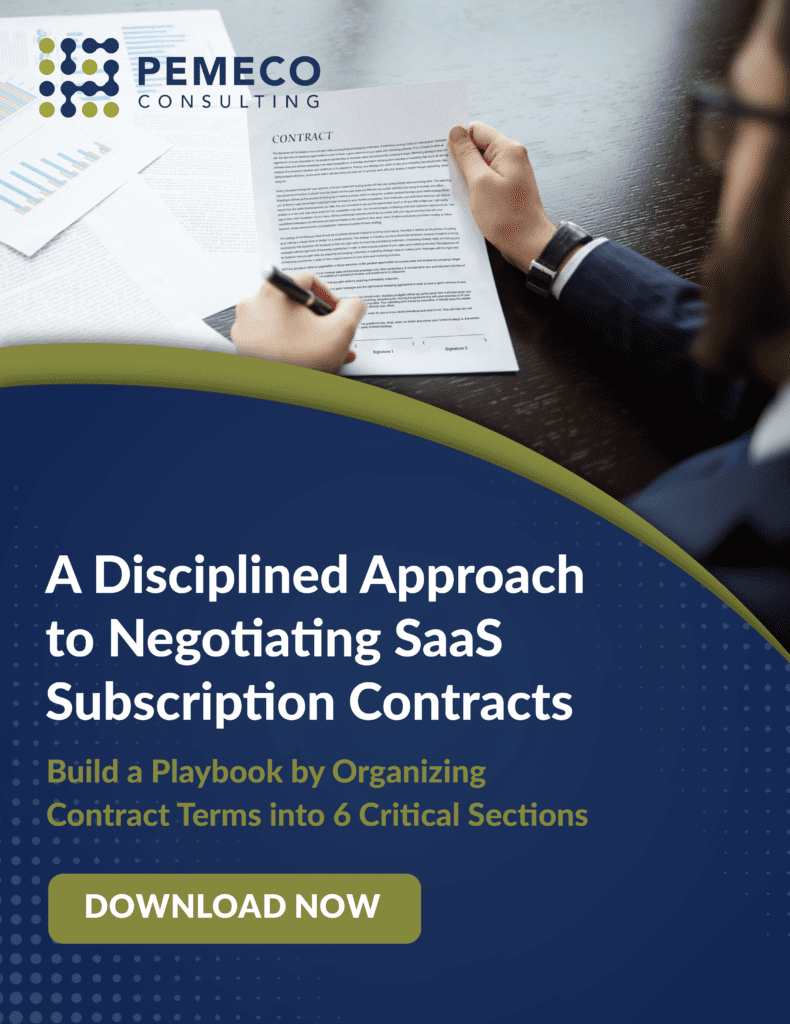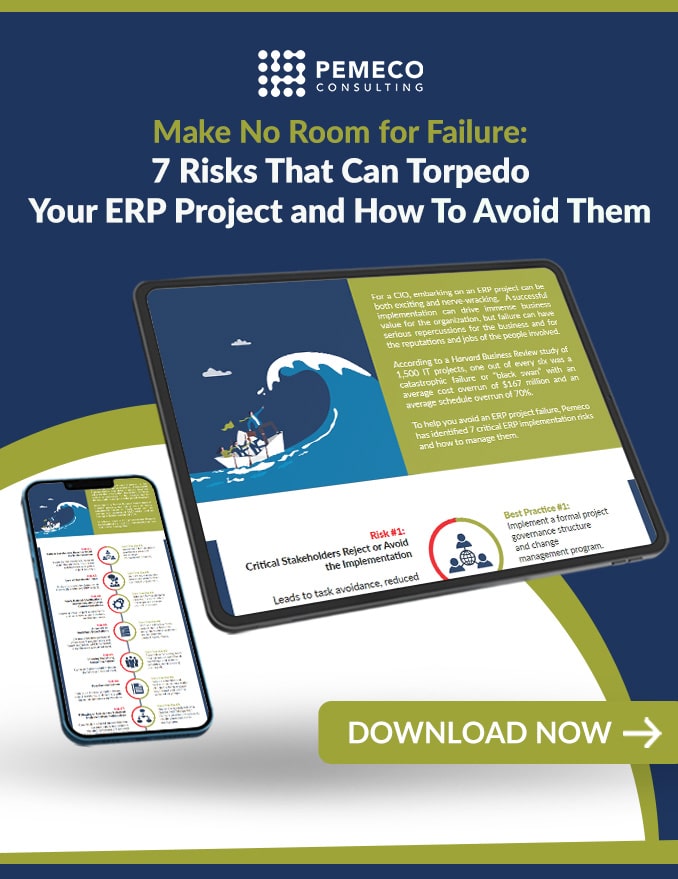For many businesses, an Enterprise Resource Planning (ERP) software system is a non-negotiable software suite that manages integrated operational and financial business processing. When presenting a business case to upper management, project champions often have difficulty articulating an ERP project’s return on investment (ROI).
Our firm’s statistics on ROI of ERP show that a successful ERP implementation can generate an ROI of between 120% and 600%, with a typical payback realized between two and five years.
This post will guide you on the basics of building a compelling ROI.
The Basics of Costs and Benefits of an ERP ROI Analysis
An ROI analysis shows whether the benefits of an investment — in this case an ERP implementation project — justify the costs and risks of that project.
When defining costs, it is important to consider the direct costs of ERP implementation, such as software acquisition and implementation service fees. It is just as important to take into account other incidental costs. These often include additional personnel hires and peripheral technologies such as barcode scanners, networking, label printers, and the like.
When it comes to calculating the benefits, it is important to consider how the company can leverage ERP and improved business processing to reduce waste. Waste reduction takes multiple forms. It can drive benefits straight to the bottom line, such as reduced manufacturing scrap, decommissioned legacy technologies, and reduced headcount. We call these benefits “hard benefits”.
Waste reduction can also relate to improved productivity and efficiencies. For example, by reducing manual low-value tasks such as data entry, a company can redeploy expensive employees to higher value activities such as analytics and decision-making. We call benefits that relate to redeployment of talent “soft benefits” because they do not directly hit the bottom line (with the exception of cost avoidance in circumstances where the company would have otherwise hired additional personnel).
Common Business Process Areas that Generate ROI of ERP
Our firm performs between 20 and 40 ROI assessments and ERP business cases annually. We’re preparing a statistical and benchmarking analysis and have noted the following areas that tend to generate significant ROI:
- Sales and order management – reduced time to enter and confirm sales orders
- Customer service – improved efficiencies managing customer order status requests and cross-functional processing of customer claims (e.g. RMAs, credit memos, and the like)
- Planning and scheduling – integrated supply chain, MRP, and production planning and scheduling that drive automated suggested purchase, manufacturing, and transfer orders
- Supply chain – automated purchase order processing and visibility into order statuses
- Inventory management – tighter visibility and control over inventory enabling improved accuracy, higher turns, reduced obsolescence, and reduced expediting fees to fill shortages
- Manufacturing – real-time visibility into manufacturing and improved controls to improve utilization, effectiveness, and yield
- Equipment maintenance – improved preventative maintenance planning, work order processing, and parts inventory management, and integration into production schedules for capacity management
- Finance and accounting – automated transactions to the general ledger reducing waste associated with manual journal entries, audit, and period close processes
- Reporting and analytics – automated real-time or batch analysis to reduce manual time collecting, transforming, and analyzing data
3 Best-Practices to Calculate ROI
Here are three best-practices to build an ROI and business case to justify your ERP project.
- Best-Practice #1: Develop a comprehensive cost model that includes all applicable technology and internal costs
- Best-Practice #2: Perform a process-level waste analysis, and ensure that benefit calculations capture both soft and hard benefits opportunities
- Best-Practice #3: Be conservative when forecasting benefits. It takes time to adopt the new system and processes.
If you need help building your ROI model or developing a business case to support your ERP project, contact our consulting team today. You can learn about our ERP assessment services here.






